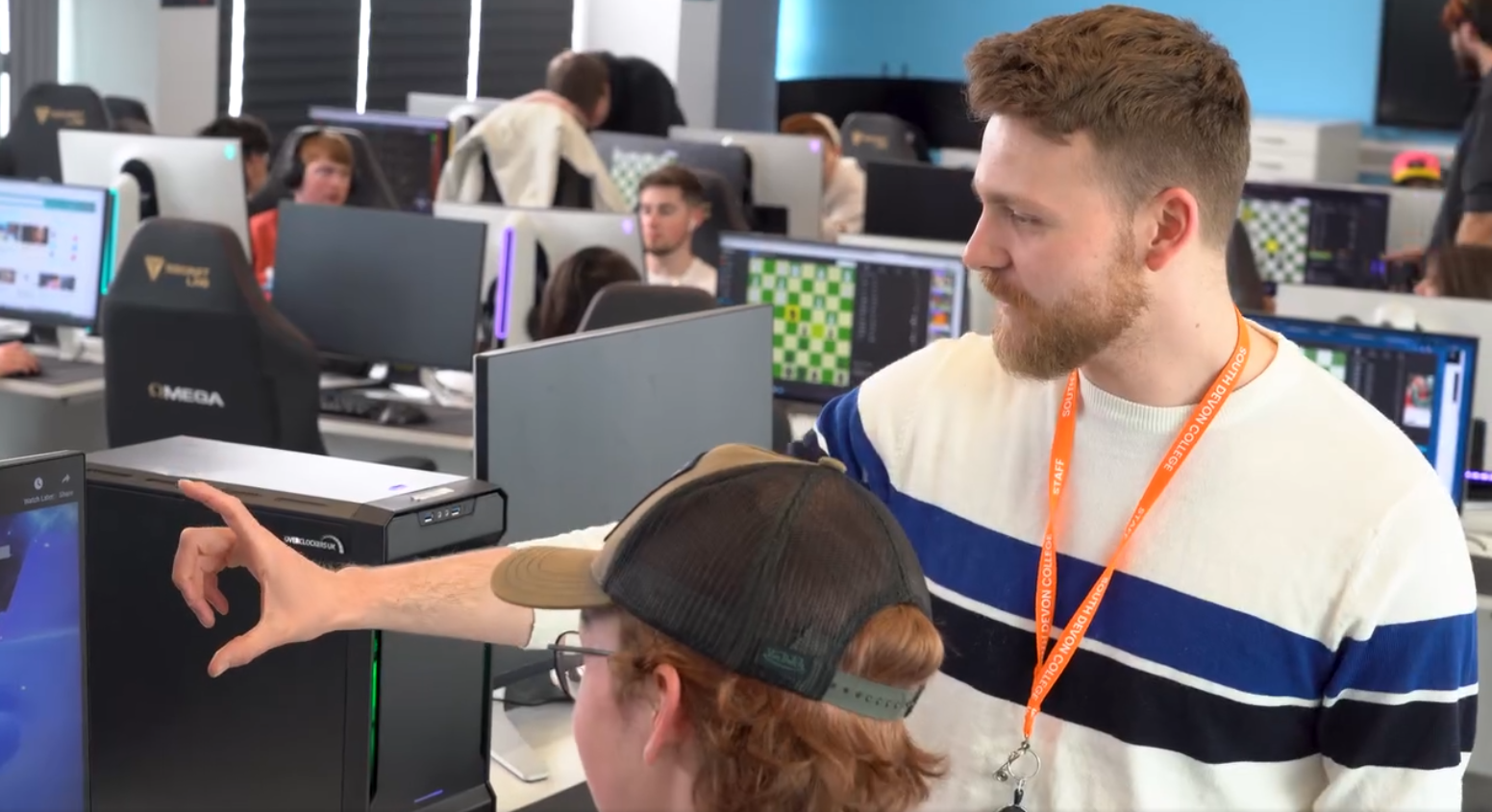Technology is rapidly evolving, with numerous advancements extending into the training and educational sectors. These advancements manifest in various forms, benefiting a wide range of domains, argues Jordan Gardner, Immersive Learning Developer at Mintra.
Within the maritime industry, the significance of leveraging technology to enhance and support its dedicated workforce is becoming increasingly important. Technology plays a pivotal role in educating and training users, allowing them to learn anytime, anywhere whilst conveniently tracking their progress and developing their skills based on feedback.
It is crucial to emphasise that this technology isn’t intended to replace traditional training methods; rather, it serves as a complementary tool to enhance them. To function effectively as a tool, it must align with employees’ needs, highlighting the importance of user-friendly interfaces and data analytics. For instance, if a user can train using virtual applications and then analyse their performance afterwards, it becomes easier to pinpoint areas for improvement. This analysis can then suggest techniques or resources to aid the user in reaching their training, educational, or personal objectives.
Technology is pivotal in training, enabling users to track progress and develop skills through feedback, enhancing traditional methods with user-friendly technology.
Amongst the rapidly improving technologies are such tools as virtual reality (VR) and augmented reality (AR). VR isn’t solely reserved for entertainment; it’s now a vital tool in corporate training across various industries. For instance, organisations like the NHS (NHS Horizons) and the military (SimCentric) are utilising VR tools to revolutionise training methodologies.
How can the maritime industry leverage this technology to enhance its current learning and development tools? The solution lies in moving away from conventional 2D screen or paper-based training towards immersive real-world scenarios and learning objectives that can be replicated in virtual or real-time environments, augmented by AR. By incorporating these methods, we enhance immersion through physical activity such as moving and interacting with objects.

Consider ship maintenance or cargo handling training. Rather than watching video demonstrations, VR can actively demonstrate effective physical performance and test users on their execution of these tasks. This approach not only improves engagement but also ensures hands-on learning that translates directly to practical skills.
Game engines enable developers to craft custom scenarios tailored to meet specific training criteria. This level of customisation ensures that the training content aligns precisely with the desired learning outcomes. Moreover, leveraging these applications allows seamless updates and modifications, enhancing adaptability and relevance over time.
We can tailor training scenarios to precise outcomes, ensuring content remains relevant and adaptable over time.
Following structured training criteria naturally leads to the expectation of feedback or assessment outcomes post-session. Integrating this feedback mechanism directly into a VR/AR application allows for session recording and result display. This functionality allows users to effortlessly review their performance, identify areas of excellence, and pinpoint opportunities for improvement within the training environment.
The trajectory of this technology is poised for significant advancement through integration with Artificial Intelligence (AI). AI is rapidly evolving and offers immense potential for enhancing education and training initiatives. Already, AI has been seamlessly integrated into VR and AR environments, often in the form of interactive avatars. These avatars serve as knowledgeable guides, assisting users in navigating complex tasks tailored to their specific industry. By providing insights and explanations, AI avatars clarify the rationale behind learning methods, empowering users to understand the importance of adopting specific approaches to accomplish their objectives effectively.

Observing the fast expansion of AI technology, it becomes evident that significant changes to our daily lives, work methods, learning approaches, and lifestyles are happening. Adapting to this evolving landscape is paramount, necessitating upskilling to effectively utilise such software. The primary objective lies in harnessing this technology as a toolset to streamline workflows and enhance productivity.
With AI integration, our technology is set to transform training, using AI avatars to guide users through complex tasks and enhance understanding of crucial techniques.
It’s important to note that traditional learning and teaching methodologies will not be entirely replaced but rather enhanced and enriched by the transformative capabilities of technologies like VR, AR, and AI. The primary goal is to ensure practical utility, where individuals leveraging these technologies experience tangible benefits and improvements in their learning and work experiences.
Technological Hardware and Gaming
With my background as a lecturer in games and interactive media, I focus on both theoretical and practical aspects, exploring how they interact and evolve to create tangible results.
It’s important to recognise that the technological hardware we use today is rapidly advancing, leading to significant popularity and sales growth in various products. Computers, consoles, and mobile phones are continually expanding their features, contributing to this trend. One major product of these advancements is video games. The video game industry has soared in popularity, now generating more revenue than the movie and music industries combined.
What motivates users to play video games? It could be the immersive experience, interactive narrative, social interaction, or competitive nature. Regardless of the reason, the gaming industry offers a wide range of experiences to cater to all types of users and situations. It’s clear that people enjoy games, whether in a digital format or as a physical activity.
The next question is: How can we integrate game-based activities into our learning environments, and what benefits would this provide? There are several use cases to consider. For instance, we can leverage the immersive element through simulations or virtual reality activities. The act of physically interacting with a visual scenario is often referred to as immersion. Controlling the outcome of these scenarios can further enhance the user’s sense of immersion.
Gamifying Learning for a Fun and Educational Experience
There are many ways to make learning more interactive and enjoyable through gamification. For example, games that track stats often present this data to show performance, encouraging users to improve. This feature is frequently paired with leaderboards.
A leaderboard is a visual display that ranks participants based on their performance, scores, or achievements within a specific activity or competition. In gaming and training contexts, a leaderboard typically shows the names or identifiers of participants along with their respective scores, points, or rankings.
Leaderboards can foster a sense of competition and achievement. Users at the top can claim the title of “best,” motivating others to strive for the top spot. In a learning setting, leaderboards can drive users to quickly improve their skills. For example, in a virtual reality scenario, tasks like inspecting items within a certain time frame or equipping specific PPE equipment can be used to obtain a score. These tasks can be time-based and then exported to fit a leaderboard for a full team.
Another method could be multiplayer collaboration, where a team of users can work together in a virtual environment to complete various tasks in a time-based scenario. An example of this could be to train crew members on how to effectively handle a fire emergency on board, emphasising teamwork, communication, and efficient execution of firefighting procedures. Each user would be assigned a role and would have to complete tasks based on these roles. At the end of the session, the data could be reviewed, and any improvements in how the operation went could be outlined.
The advantage of this approach is that it not only reviews the tasks but also evaluates how users interact with each other. Conducting this in VR within an environment of the team’s choosing, whether on a vessel or an oil rig, allows for complete immersion and provides a fun and enjoyable experience.
Mintra is rapidly advancing in data extraction capabilities. There is the potential to record vast amounts of information from a user’s session in virtual reality, including their navigation paths, objects they interacted with, areas they looked at, and the duration of their focus. All this data is recorded and can be extracted for the development of applications, as well as to provide valuable feedback to the user and their team.
By adopting these cutting-edge technologies and a forward-looking perspective, the maritime industry can ensure that its workforce is better trained, more skilled, and ready to meet future challenges.
The views presented hereabove are only those of the author and do not necessarily reflect those of SAFETY4SEA and are for information sharing and discussion purposes only.







































![]](https://safety4sea.com/wp-content/uploads/2024/06/shutterstock_2318996555-350x250.jpg)


























